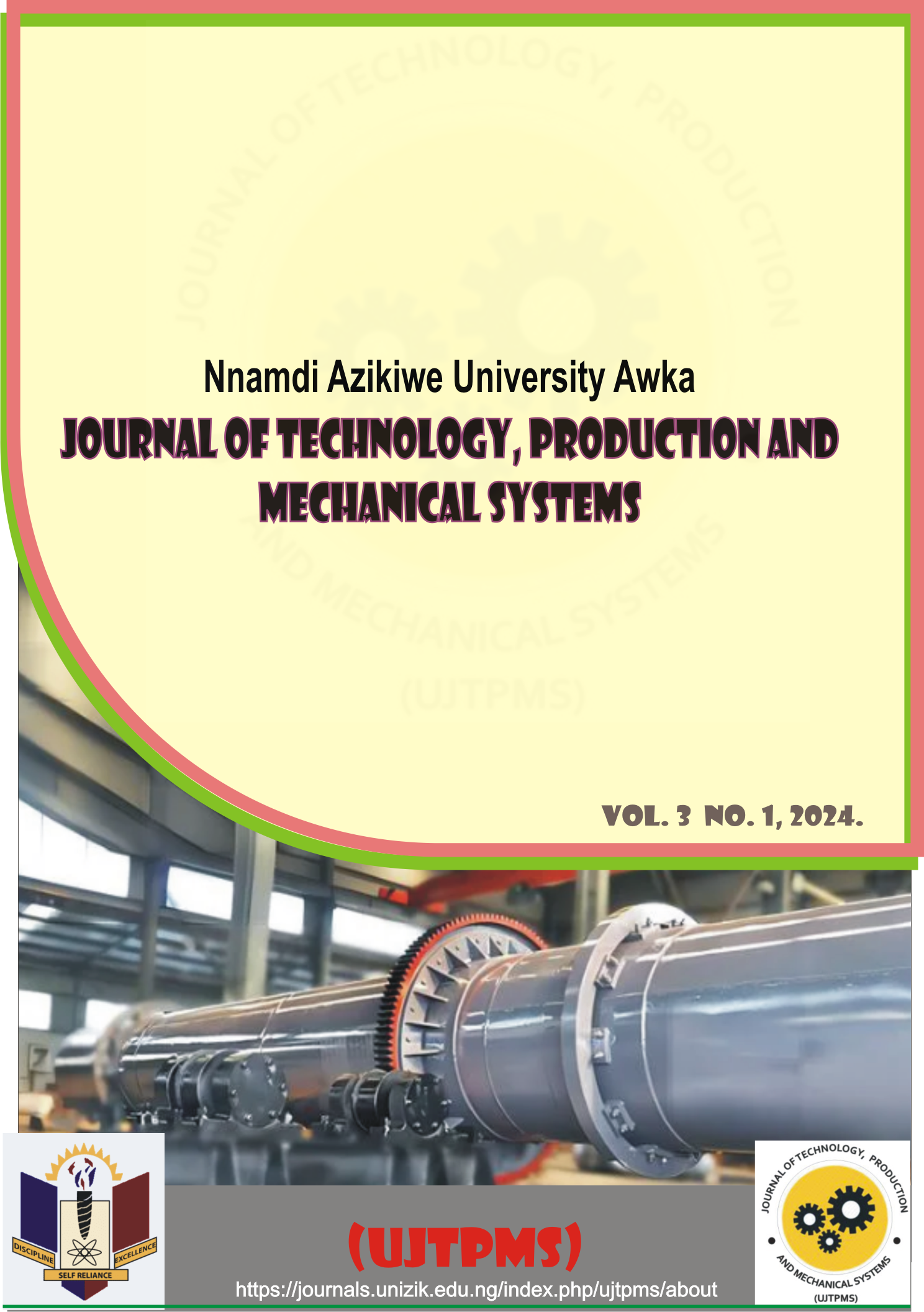Comparative Analysis: Heat flow & drying performance in a dual Electric/gas convective dryer
Keywords:
Convective drying, Comparative analysis, Electric/gas heat source, Heat TransferAbstract
This study scrutinizes convective dryers at 45°C and 60°C, comparing the impact of electric and gas heat sources on heat flow and drying performance. By analyzing temperature changes within dryer compartments, we uncovered unique behaviors for each heat source. Gas showed faster moisture reduction compared to electric, achieving 9.81%wb and 9.39%wb at 45°C and 60°C in 33 and 21 hours, respectively, compared to 10.08%wb and 10.22%wb in 34 and 22 hours for electric. Effective diffusivity increased from 8.792 ×10-8 m2/s to 1.22 ×10-7 m2/s for electric and 8.9×10-8 m2/s to 1.42×10-7 m2/s for gas. Activation energy was 39.08kj/mol for electric and 42.59kj/mol for gas. The Page model demonstrated high accuracy (R2 = 0.9968, RMSE = 0.0132, X2 = 0.0002) across temperatures and heat sources for drying Clarias gariepinus. The findings suggest practical implications for industrial drying processes, highlighting the potential advantages of gas-based drying systems for faster and more efficient drying operations. Further exploration of these findings could lead to optimized drying methodologies, potentially enhancing efficiency in various drying applications within the industry.
Downloads
Published
Issue
Section
License

This work is licensed under a Creative Commons Attribution-NonCommercial 4.0 International License.






